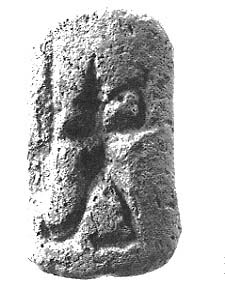
If archaeology is anything, it is excavation. What archaeologists do is dig. Their trademark is the pick. They also use the shovel, patishe, trowel and other instruments to remove earth so they can find out what is underneath.
Yet some things are on the surface. Right there on the ground. And that’s what I would like to talk about in this BAR Jr. column.
At almost any place where people have lived in the ancient Near East, you will find broken pieces of pottery on the surface. Clay vessels break easily but fortunately in ancient times they were inexpensive so no one cared too much if they broke. And though the vessel shattered, its broken pieces were almost indestructible. Pottery will survive forever! This is not true of papyrus or cloth or wood, but it is true of potsherds, these broken pieces of pottery that archaeologists call sherds for short.
A sure sign that a site was occupied by humans in ancient times are sherds scattered on the surface—pieces of juglets, bowls, cooking pots, storage jars and, occasionally, more exotic vessels. The surface sherds are a kind of preview of what the archaeologists will find if they decide to excavate. Under the ground, they may find layer upon layer of ancient cities, one on top of the other. The deeper they go, the older the city they will uncover. Yet sherds from most, if not all, of these layers of strata will be strewn about the surface.
Already a library member? Log in here.
Institution user? Log in with your IP address.

